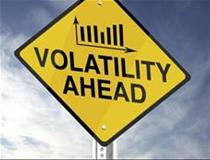In 2005, interest rate derivative and bond traders wanted more volatility in the rates markets. Interest rate volatility markets were all but dead, and traders complained about being bored. They had a point, and to be fair, traders need some volatility to make money.
 But the old adage, “be careful for what you wish for,” holds true. With a flat, risk-free curve and little regulation, financial engineering had hit an all-time high. Spreads were so tight, and it was very hard to create structures for investors to pick up a measly basis point or two on the margin.
But the old adage, “be careful for what you wish for,” holds true. With a flat, risk-free curve and little regulation, financial engineering had hit an all-time high. Spreads were so tight, and it was very hard to create structures for investors to pick up a measly basis point or two on the margin.
We know what happened next. We got volatility – and then some. Credit dried up, liquidity dried up, equities were pummeled, the economy came to a standstill, jobs were lost and margin calls multiplied.
Over time, albeit some extremely tough times, equity markets recovered as indices pushed new limits and set new highs year after year. But naturally, economists began to wonder what would happen when the Fed began to remove accommodation and started to deleverage their balance sheet.
What happens to liquidity?
During this expansion period, easy money and low discount factors drove asset prices higher. Deficit after deficit ballooned U.S. Treasury needs and led to record-setting amounts of outstanding debt.
We are now into the fourth year of Fed tightening and balance sheet deleveraging (though shrinking the balance sheet is more recent). Rates have moved higher, which has impacted rate sensitive markets. For example, housing growth continues to slow.
However, a potential slowdown in the economy, a trade war with China, widening credit spreads, corporate earnings that may have already peaked, geopolitical concerns, and tax cuts may all cause concern as the Fed pulls support and eventually lets the markets act on their own. This is all occurring as the Fed continues to drain liquidity. Financial institutions, such as Catalyst Corporate, have modeling tools available to assist credit unions with liquidity management during any possible volatility.
Welcome back, volatility!
Volatility is back in most markets, but it is still fairly nonexistent in the rates market. Treasury yields have remained range-bound. This cannot be said for equities, currencies, energy/commodities, etc. Oil has fallen off a cliff, and natural gas just went through its annual spike.
Will volatility continue?
We don’t know yet. If a recession is on the horizon, what will happen first? In the past, we’ve seen currencies devalued, a NASDAQ bubble, a mortgage market collapse, etc. Will we have a credit crisis in the corporate market next?
The cash to debt ratio for corporates fell to its lowest level ever – 12 percent – in 2017. Credit spreads are widening, the leverage loan market has ballooned, corporate debt is at an all-time high, bond holders are unable to move big positions as dealers are balance-sheet constrained due to regulation. Will this cause the Fed to overtighten? Will equities go through a prolonged correction? Will oil prices stop dropping? Will corporate treasurers be able to refinance their debt?
Historically, the Fed’s over tightening generally pushes the U.S. economy into a recession. The markets don’t like uncertainty when it comes to the Fed. But, with so much unknown as we get closer to the end of a Fed tightening cycle, market volatility is back, reminding us to be careful what we wish for!